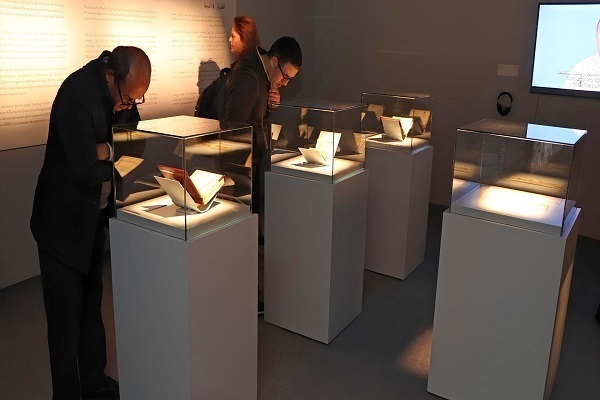Manuscripts Hidden in Tunisia’s Historical Treasures

Tunisian libraries contain a large number of manuscripts thanks to centuries of scholarly and intellectual activity in institutions such as the universities of Zaytouna, Kairouan, and private libraries on the islands of Djerba and other centers, according to a report by Al-Arabi Al-Jadeed.
However, given the decline in the number of publications in this field and the slow pace of work on multi-volume works, the field of manuscript research does not seem attractive to cultural and academic institutions and publishing houses.
An example of this is the manuscript of “Al-Kitab al-Bashi” written by Hamudah ibn Abdulaziz, an 18th-century historian and writer. The complete manuscript was published on September 20 of this year, after a long wait, by the Kitab Al-Atrash Institute, under the supervision of Nadia Boussaid Ben Jabr, a researcher and university professor. This Tunisian publishing house published the first part in 1970, edited by Mohamed Mazour. However, the project remained incomplete due to the failure to publish the second part of the work, which is no less important than its previous version.
The treasures of Tunisian libraries
The preservation of a large part of the wealth of Tunisian manuscripts is due to the cataloguing and documentation carried out by Mohamed Mahfouz in his book "Biographies of Tunisian Writers" (1994) and Hassan Hassani Abdel Wahab in "The Book of Life in Tunisian Writings". These two works formed the basis for the initial emergence of the National Library Institute from 1885, which succeeded in preserving and collecting a significant part of this heritage. Thanks to the National Laboratory for the Conservation and Preservation of Manuscripts in the city of Raqqada, manuscript conservation and restoration projects were launched.
However, these efforts do not hide the weakness of the research process, or at least its decline compared to previous periods, which reached their peak in the 1960s and 1970s. During this period, a number of fundamental works in jurisprudence, history and poetry were examined, including “Alam al-A’yan lat-khuffifat al-shari’a ‘an al-‘Ubayd wa al-Sabiyyah” by Ahmad Bernaz (17th century), Diwan al-Wurghi (18th century) and “Ithaf ahl al-zaman fi akhbar maluk tunis wa ahd al-aman” by Ibn Abi al-Diyaf (19th century), as well as other works by a number of historians, writers and intellectuals such as Muhammad al-Tahir ibn Ashur and Rashad al-Imam.
What is remarkable about this period is that these efforts were not carried out individually or haphazardly, but rather as part of an organized and pre-planned effort by institutions that were largely affiliated with the government. One example is the “Collection of Exquisite Manuscripts” project published by the Tunis Press. This is the same collection that the first part of the Kitab al-Bashi was published as part of. However, this momentum later diminished due to the end of major cultural projects and the closure of publishing houses.
This did not mean the end of the research movement of these institutions. Rather, this role continued, especially with the entry of new institutions into this field. These included the Foundation for Literature, Sciences and Arts of the House of Wisdom, the National Library, and the Imam Malik Manuscripts Foundation.
Perhaps the most remarkable achievement of this period was the comprehensive and extensive research on the work of the eminent author Ibn Khaldun, known for short as Kitab al-Ibr or Tarikh Ibn Khaldun, and its famous introduction. Dozens of scholars participated in this research and it was supervised by Ibrahim Shabouh. This led to the most important scientific research on a work whose scientific and historical value goes beyond Tunisian borders.
Meanwhile, the National Library has invested in research on rare manuscripts on important topics. Among them is the research on the novel "The Trick and the Love", which is the first novel written in Tunisian colloquial Arabic in 1916 by Yacoub Chamla. However, all of the above are not selected examples of a continuous work, but rather examples of numerous experiences, and of course the role of the responsible institutions in them should not be overlooked.
Cataloging manuscripts
Abd al-Wahab Dakhli, in his study entitled "The Contribution of Tunisia to the Study of the Manuscript Heritage", points out the inability to accurately catalog manuscripts due to their dispersion among the aforementioned institutions and some academic institutions, such as the University of Zaytouna, which specializes in the study of religious manuscripts. As a result, a number of these studies remain on the shelves of these academic institutions.
Read More:
It is true that some of these investigations offer new insights, given scientific advances or the discovery of new copies of original works. This is the case with the discovery of a new manuscript of an ancient historical text, “Ma’alam al-Iman fi Ma’rifat ahl al-Qayrawan” (Signs of Faith in Knowing the People of Qayrawan) by Dabbagh al-Qayrawani. This discovery has called into question some of the conclusions of this work.
Individual efforts
In contrast, there is an emerging phenomenon of individual research projects, undertaken by novice or expert scholars, often at their own expense.
Perhaps the most notable work in this area is the investigation of a historical text on the beginnings of modernity in Tunisia during the nineteenth century, “Al-Aqd al-Mundayd fi Akhbar al-Mushir al-Basha Ahmad” (The Tidy Necklace in the Accounts of Marshal Pasha Ahmad) by Sheikh Muhammad ibn Salamah, published last year by Ahmed al-Tuwaili. However, these efforts are not officially recognized or encouraged, so that manuscript research is not included in the list of awards presented at official cultural events such as book fairs.
Therefore, individual research, even for private publishers, is not necessarily encouraged, given the lack of incentives. Only a few publishers are willing to undertake and invest in such work.
4309942



